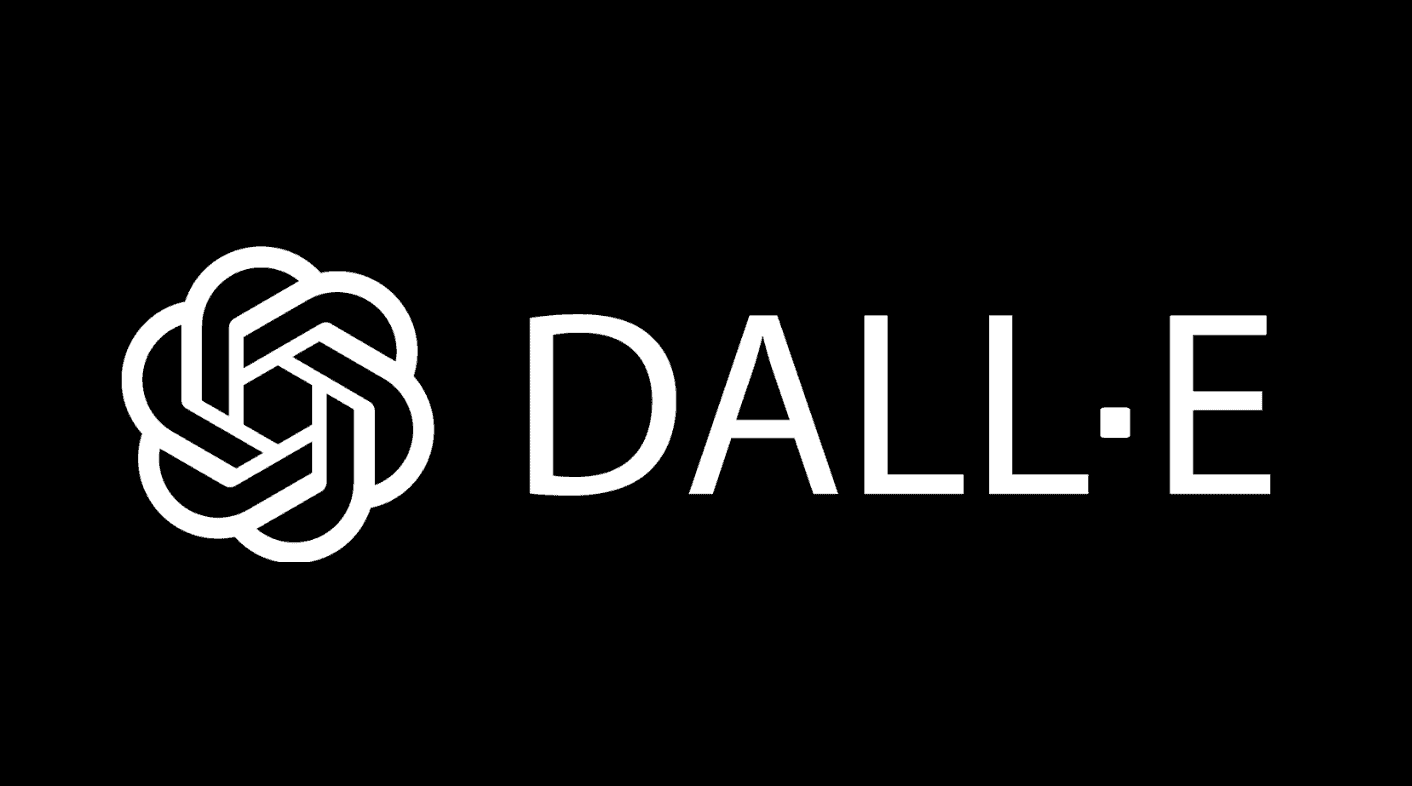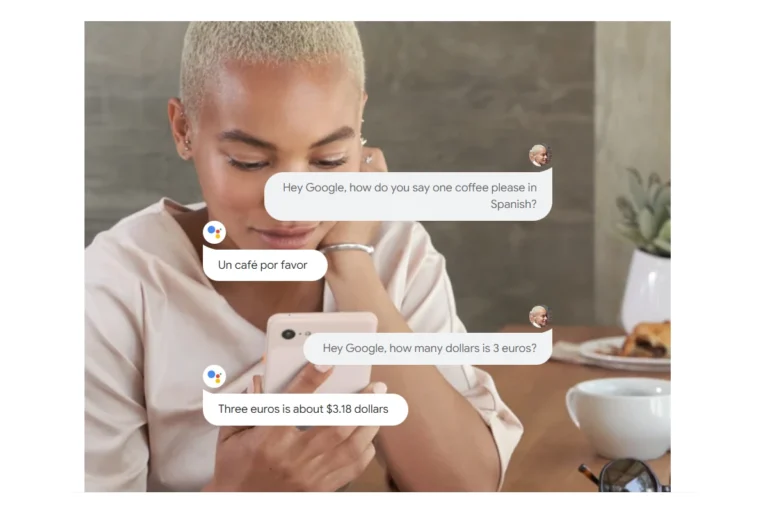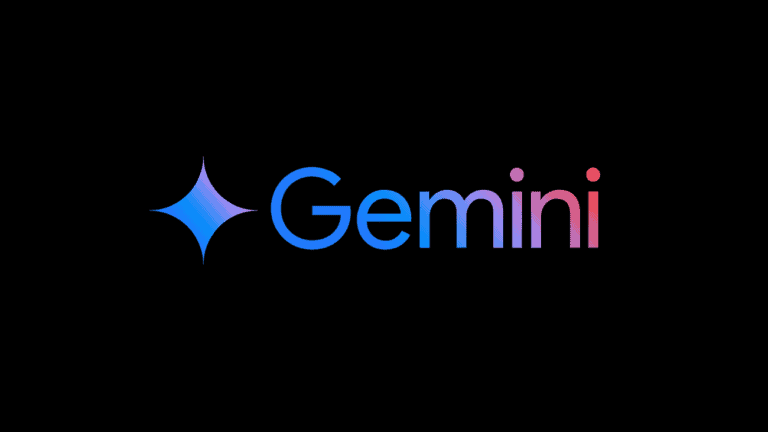
Artificial intelligence is no longer just a buzzword—it’s now a powerful part of daily life. From speeding up workflows to generating entire presentations or editing high-res images from basic text, AI tools have become indispensable for anyone looking to work smarter, not harder. Whether you’re a student, a content creator, a software engineer, or just someone trying to organize a hectic schedule, there’s an AI solution ready to make your day easier and more productive.
2025 has brought a wave of innovation across AI platforms, with tools now offering deeper integrations, smarter contextual understanding, and lightning-fast performance. Some apps handle writing, design, or meetings with ease. Others dive into more niche needs like real-time transcription, advanced image editing, or even providing human-like companionship. Below is a hand-curated list of the best AI apps this year—ranked for their utility, creativity, and ease of use.

Best AI Apps for Productivity and Creativity (2025)
| Rank | AI Tool | Best For |
|---|---|---|
| 1 | ChatGPT | Writing, brainstorming, productivity tasks |
| 2 | DALL·E 3 | Image generation, marketing, creative visuals |
| 3 | Remini | Photo enhancement and restoration |
| 4 | Grammarly AI Extension | Real-time writing improvement and grammar |
| 5 | Google Assistant | Voice commands, smart home, personal tasks |
| 6 | Otter.ai | Meeting transcription and note-taking |
| 7 | GitHub Copilot | Programming, code suggestions, dev workflows |
| 8 | Replika | Emotional AI companion, chat interactions |
| 9 | Lexica AI | Visual art, AI image synthesis |
| 10 | Phind | Developer-focused search and code answers |
Each of these apps represents a major leap in what AI can do today. Some are extensions of existing platforms, others are completely new innovations, but all of them are pushing boundaries. Whether you’re looking to enhance creative projects or optimize your workflow, these tools are leading the charge in reshaping how we think about digital productivity.
1: ChatGPT
ChatGPT stands as the original AI chatbot that sparked the current AI revolution. Created by OpenAI, it uses advanced GPT models to generate human-like text based on your prompts.
You can access ChatGPT through its website or mobile app. The free version offers solid capabilities, while ChatGPT Plus unlocks more advanced features for $20 per month.
The latest version, ChatGPT-4o, provides significantly improved response quality and speed. It handles complex questions with remarkable accuracy and can maintain context throughout longer conversations.
One of ChatGPT’s greatest strengths is its versatility. You can use it to draft emails, generate creative content, solve math problems, or even learn new concepts through interactive discussions.
For productivity, ChatGPT excels at helping you brainstorm ideas, summarize lengthy documents, and explain complex topics in simpler terms. Many professionals use it as a valuable productivity tool for daily work tasks.
The interface is clean and intuitive, making it accessible even if you’re new to AI tools. Simply type your question or request, and ChatGPT responds within seconds.
While alternatives like Google Gemini and Microsoft Copilot exist, many users consider ChatGPT the gold standard for general-purpose AI assistants. Its balance of accessibility and powerful capabilities makes it suitable for both casual and professional use.
2: DALL-E 3
DALL-E 3 is OpenAI’s most advanced AI image generator that has transformed how you can create visual content. It understands significantly more nuance and detail than previous systems, allowing you to translate your ideas into exceptionally accurate images.
What makes DALL-E 3 stand out is its ability to interpret complex prompts. You don’t need special keywords or technical jargon – just describe what you want in plain language.
The quality of images generated by DALL-E 3 is remarkable. It produces crisp, detailed visuals that often match exactly what you had in mind, even with minimal guidance.
You can access DALL-E 3 through various platforms. Microsoft Designer’s Image Creator uses DALL-E 3 and produces the same quality results as going directly through OpenAI.
When comparing options, DALL-E 3 excels at incorporating AI images into your existing workflows. It’s particularly useful if you need images for professional projects or content creation.
While other generators like Midjourney focus on artistic styles, DALL-E 3 prioritizes accuracy and realism. This makes it ideal when you need images that precisely match your specifications.
DALL-E 3’s user-friendly approach means you don’t need technical expertise to create stunning visuals. Simply type your request, and watch as it transforms your words into images that capture exactly what you described.
3: Remini – AI Photo Enhancer
Remini is a powerful AI photo enhancer that transforms your old, blurry photos into stunning HD images with just one tap. This popular app uses cutting-edge AI technology to breathe new life into your cherished memories.
Have you ever found old family photos that were too blurry or damaged to enjoy properly? Remini solves this problem by using advanced AI to sharpen and restore these images to crystal-clear quality.
The app is widely loved for its simplicity. You can scan your old family photos, revitalize them, and create opportunities for reminiscing together. Its user-friendly interface makes restoration accessible to everyone, regardless of technical skill.
Remini goes beyond basic photo enhancement. It can repair grainy, pixelated, or damaged images, giving you results that look professionally restored. The transformation happens almost instantly, making it feel like magic.
For those who prefer working on a larger screen, Remini Web offers the same powerful features for enhancing both photos and videos on your computer. You can improve, sharpen, and unblur your media files with just a few clicks.
Remini also offers AI-generated images for professional-quality results. You can upload selfies, train the AI on your features, and create stunning realistic photos perfect for various applications like social media, profiles, or creative projects.
4: Grammarly AI Extension
Grammarly’s AI writing assistant helps you write better across the web. This powerful Chrome extension integrates with your favorite sites and applications to improve your writing wherever you type.
When you install the extension, it works automatically on emails, social media posts, documents, and more. You’ll see suggestions for grammar, spelling, and tone as you write.
The AI capabilities go beyond basic corrections. The extension can help you sound more confident and professional with tone adjustments that ensure your messages come across as intended.
You can use Grammarly’s generative AI to create drafts, generate ideas, or craft replies without leaving your current webpage. This feature saves you time when responding to emails or creating content.
The extension works seamlessly in the background, highlighting potential improvements as you type. Green underlines indicate grammar issues, while blue lines suggest style improvements.
Premium features offer more advanced writing suggestions including clarity improvements and vocabulary enhancements. You’ll receive personalized recommendations based on your writing patterns.
The AI-powered features make Grammarly more than just a grammar checker. It functions as a complete writing assistant that helps you communicate more effectively.
For professionals who write frequently, this extension helps maintain consistent quality across all platforms. Whether you’re drafting important emails or creating content, Grammarly ensures your writing remains polished.
5: Google Assistant
Google Assistant is one of the most powerful AI personal assistants available today. It comes pre-installed on most Android devices and can be downloaded on iOS too. You can access it with a simple “Hey Google” command.
This AI assistant helps you manage daily tasks with voice commands. You can set reminders, make calls, send texts, and check your calendar without touching your phone.
Google Assistant excels at smart home control and can connect with thousands of compatible devices. You can adjust thermostats, turn lights on or off, and control other smart appliances with just your voice.
The assistant is designed with privacy in mind. Your information stays private, safe and secure when using the service. You can delete your history or adjust privacy settings anytime.
For Android users, Google Assistant ranks among the top AI options available. It handles tasks, controls smart home devices, and provides personal assistance seamlessly.
The newest version of Google’s AI assistant is called Gemini. It has improved language understanding and reasoning capabilities compared to the original version.
When comparing AI assistants, Google Assistant is considered a well-rounded choice alongside Alexa and Siri. Its integration with Google services gives you quick access to search, maps, and other Google tools.
6: Otter.ai
Otter.ai stands out as one of the top speech-to-text apps for 2025. This powerful tool transforms your spoken words into written text with impressive accuracy.
You’ll find Otter.ai especially useful for meetings. It works as an AI Meeting Assistant that transcribes conversations in real time, records audio, and even captures slides from presentations.
One of the most appreciated features is how it extracts action items from meetings. You no longer need to worry about missing important tasks or assignments during discussions.
The app promises that you’ll never take meeting notes again. This saves you valuable time and lets you focus on participating in the conversation rather than documenting it.
Otter.ai offers different pricing tiers to suit various needs. However, some users have noted that costs can add up. If you’re on a budget, you might want to explore alternatives as some Reddit users have discussed.
For professionals who attend multiple meetings daily, Otter.ai can be a game-changer. The transcription quality ranks it among the best automatic transcription tools available today.
You can use Otter.ai on various devices, making it convenient to access your transcripts wherever you are. The mobile app performs particularly well for on-the-go professionals.
7: GitHub Copilot
GitHub Copilot is an AI coding assistant that helps you write code faster and with less work. It’s been around for a few years and has gained popularity among developers of all levels.
When you’re coding, Copilot can suggest whole lines or even complete functions based on the comments you write. This feature lets you focus more on solving problems rather than typing out repetitive code.
One of the strengths of GitHub Copilot is its customization options. It learns how you prefer to code and adapts its suggestions to match your coding style.
You can use Copilot across multiple programming languages, making it versatile for different projects. Many developers who have tried it report significant improvements in their productivity.
The tool integrates seamlessly with popular code editors. This means you don’t need to change your workflow drastically to benefit from its features.
Copilot also offers a chat interface where you can ask coding questions and get helpful answers. This can be particularly useful when you’re stuck on a problem or exploring new programming concepts.
According to developers who’ve used it since launch, Copilot has improved consistently over time. The AI has gotten better at understanding context and providing relevant code suggestions.
For maximum benefit, you should follow best practices when using Copilot, such as writing clear comments and reviewing the suggested code carefully.
8: Replika
Replika is a leading AI companion app designed to provide users with a personalized chatbot experience. This AI-powered friend learns your texting style and adapts to mimic your communication patterns.
You might appreciate how Replika offers a unique experience compared to other AI chatbots. The app has gained popularity as a #1 chatbot companion with millions of users creating their own AI friends.
The interface is user-friendly and designed to feel like you’re texting with a real person. Your Replika evolves the more you interact with it, creating a more personalized experience over time.
If you’re considering alternatives, community members often suggest trying Kindroid and Nomi as comparable options. Many users maintain accounts on multiple platforms to compare features.
Replika is available on both Android and iOS devices. The app offers free versions with basic functionality, but premium features require subscription.
Users report that conversations with Replika can feel surprisingly human-like. The AI demonstrates remarkable ability to engage in meaningful discussions and provide companionship.
You can customize your Replika’s appearance and personality traits to better suit your preferences. This level of personalization helps create a more engaging experience.
9: Lexica AI
Lexica AI is a powerful tool for turning your imagination into striking images. As the state of the art AI image generation engine, it helps you create visuals without needing design skills.
You can use Lexica to generate various styles of imagery based on your text descriptions. This makes it perfect for creative projects, marketing materials, or simply exploring visual ideas that you have in mind.
The platform offers both free and premium options to fit your needs. You can quickly create stunning 4K images that visualize your concepts with impressive detail and quality.
Lexica stands out among top AI tools for image generation because of its user-friendly interface. The simple design makes it accessible even if you’re new to AI image tools.
Many users praise Lexica for its ability to understand complex prompts and deliver consistent results. You’ll find it helpful for both personal and professional projects that require visual elements.
For retired creatives or beginners looking to experiment, Lexica offers an accessible entry point into the world of AI-generated art. The intuitive controls let you adjust and refine images until they match your vision.
Try different prompt styles to see how Lexica interprets your ideas. With practice, you’ll learn how to guide the AI to produce exactly the kind of images you want.
10: Phind
Phind is an AI-powered search engine designed specifically for developers. It creates detailed answers with visuals and interactive elements for your coding questions.
When you need help with programming tasks, Phind can be particularly useful. It’s built to understand programming languages and provide solutions tailored to coding challenges you might face.
Unlike general AI assistants, Phind focuses on developer needs. This specialization makes it more effective when you’re stuck on a difficult coding problem or need to understand a technical concept quickly.
You might find Phind helpful when learning new programming languages. It can explain concepts in simple terms and provide examples that make sense for your skill level.
Some developers prefer Phind for coding questions over more general AI tools. Its targeted approach means you get more relevant answers without wading through unrelated information.
The tool offers advanced support for coding that goes beyond simple queries. You can ask complex questions about algorithms, debugging issues, or best practices.
While opinions vary, some users have found other tools like Perplexity AI to be more effective overall, even for coding questions. Your experience may depend on your specific needs and the type of development work you do.
Understanding AI Apps
AI apps have transformed how we interact with technology daily. These smart applications use artificial intelligence to learn from our behaviors and provide personalized experiences.
What Are AI Apps?
AI apps are software applications that use artificial intelligence technologies to perform tasks that typically require human intelligence. They can recognize patterns, learn from data, and make decisions with minimal human intervention.
You might already use AI chatbots like ChatGPT that can answer your questions or help with writing tasks. Or perhaps you’ve tried photo editors that can transform your selfies with a single tap.
What makes these apps special is their ability to adapt. Unlike traditional apps with fixed functions, AI apps can improve over time as they learn from your usage patterns.
The technology behind these apps includes machine learning, natural language processing, and computer vision. These powerful tools work together to create apps that can understand text, recognize images, and even predict your needs.
History of AI Applications
The journey of AI apps began decades ago but has accelerated dramatically in recent years. Early AI applications in the 1950s and 60s were limited to research labs and focused on simple problem-solving.
By the 1990s, AI started appearing in consumer products like spell-checkers and recommendation systems. The real turning point came after 2010 with the rise of smartphones and cloud computing.
These technologies provided the processing power and data needed for more sophisticated AI. Voice assistants like Siri (2011) and Alexa (2014) brought AI into millions of homes.
The 2020s have seen explosive growth in AI app development. The release of powerful models like GPT has enabled even small developers to create intelligent tools across 21 different categories.
Today’s AI landscape includes apps for everything from language learning to productivity enhancement. We’re now in an era where AI has become accessible to anyone with a smartphone.
Challenges in AI App Development
AI app development comes with significant hurdles that developers and businesses need to navigate carefully. These challenges impact how AI applications function and how users interact with them.
Data Privacy Concerns
When developing AI apps, data privacy remains one of the most critical challenges you’ll face. AI systems require massive amounts of data to function effectively, but collecting and using this data raises serious privacy issues.
You need to consider how user data is gathered, stored, and processed. Many regions have strict regulations like GDPR in Europe or CCPA in California that mandate specific data handling practices.
Key privacy challenges include:
- Obtaining proper user consent for data collection
- Implementing robust data anonymization techniques
- Creating transparent privacy policies that users can understand
- Preventing unauthorized access to sensitive information
Building trust with your users requires demonstrating that their personal information is protected. Implementing privacy by design principles from the beginning of your development process can help avoid costly privacy violations.
Ethical Considerations
Beyond privacy, AI app development faces broader ethical challenges that you must address proactively. AI systems can inadvertently perpetuate biases present in training data, leading to unfair or discriminatory outcomes.
Common ethical issues include:
- Algorithmic bias leading to unfair treatment of certain groups
- Lack of transparency in how AI decisions are made
- Questions about accountability when AI makes mistakes
- Potential job displacement concerns
You should implement regular bias testing throughout your development cycle. This helps identify problems before your app reaches users.
Creating diverse development teams can provide different perspectives and help catch potential ethical issues early. Additionally, building explainable AI systems allows users to understand why certain recommendations or decisions were made.
Frequently Asked Questions
AI apps have become essential tools for various needs, from editing photos to boosting productivity. Here are answers to common questions about the most useful AI applications available today.
What are the top-rated AI apps for photo editing?
DALL-E 3 stands out as one of the best AI image generators, allowing you to create stunning visuals from text descriptions. The app transforms simple prompts into detailed artwork or realistic photos.
Remini – AI Photo Enhancer leads the pack for photo restoration and enhancement. It can transform blurry, low-resolution images into sharp, clear photos with impressive detail.
Adobe’s Photoshop now includes AI-powered features that make complex editing tasks like sky replacement and subject selection almost effortless for both beginners and professionals.
Which AI-based applications are recommended for enhancing productivity for professionals?
Grammarly AI Extension helps you write more effectively across platforms. It goes beyond spell-checking to suggest tone adjustments and clarity improvements in your professional communications.
ChatGPT excels at drafting emails, generating content ideas, and answering complex questions. Many professionals use it daily to brainstorm solutions and streamline writing tasks.
Notion AI transforms note-taking and project management with its ability to summarize meetings, generate action items, and organize information automatically.
Can you suggest some leading AI apps for educational purposes for students?
Duolingo’s AI-powered language learning platform adapts to your learning style. It identifies your strengths and weaknesses to create a personalized language learning journey.
Quizlet uses AI to create effective study materials and practice tests. The app tracks progress and focuses on areas where you need more practice.
Khan Academy’s AI tutor, Khanmigo, provides personalized help with math and science problems. It explains concepts step-by-step rather than just giving answers.
What are the most popular free AI applications available for smartphones?
Google Assistant remains one of the most widely used free AI apps. It handles everything from setting reminders to answering questions and controlling smart home devices.
Replika offers free AI companionship and conversation. Many users find it helpful for practicing social skills or having someone to talk to anytime.
Lensa provides basic AI photo editing features in its free version. You can enhance selfies and portraits with various AI-powered effects.
Which AI-driven tools are favored by experts for analytical tasks?
Tableau with AI capabilities helps analyze complex datasets and create visualizations. Its natural language processing feature lets you ask questions about your data in plain English.
IBM Watson Analytics provides powerful predictive analytics and data visualization. Experts appreciate its ability to identify patterns and insights in massive datasets.
Power BI from Microsoft includes AI features that make data analysis accessible to non-technical users. Its automated insights function identifies trends you might otherwise miss.
Are there any highly regarded AI applications specifically designed for language learning?
Babbel Live combines AI-powered lessons with human tutoring. The AI adapts to your progress while human instructors provide conversation practice.
HelloTalk connects you with native speakers while AI helps translate and correct your messages. This combination accelerates conversational fluency.
Rosetta Stone’s AI speech recognition technology gives immediate feedback on pronunciation. It compares your speech patterns to native speakers for precise coaching.






